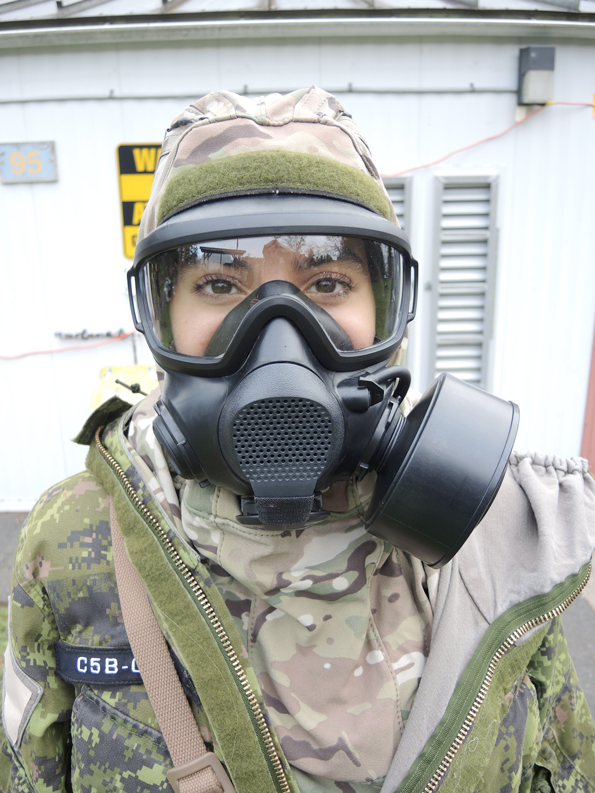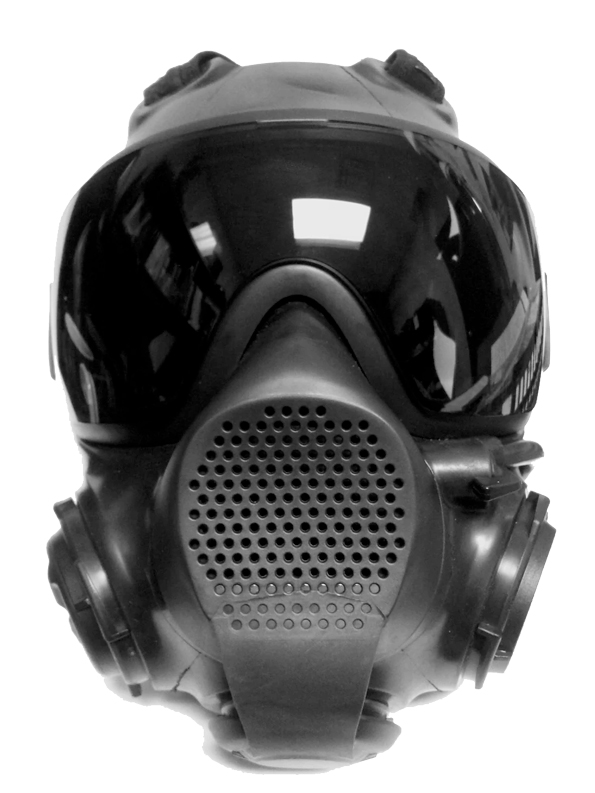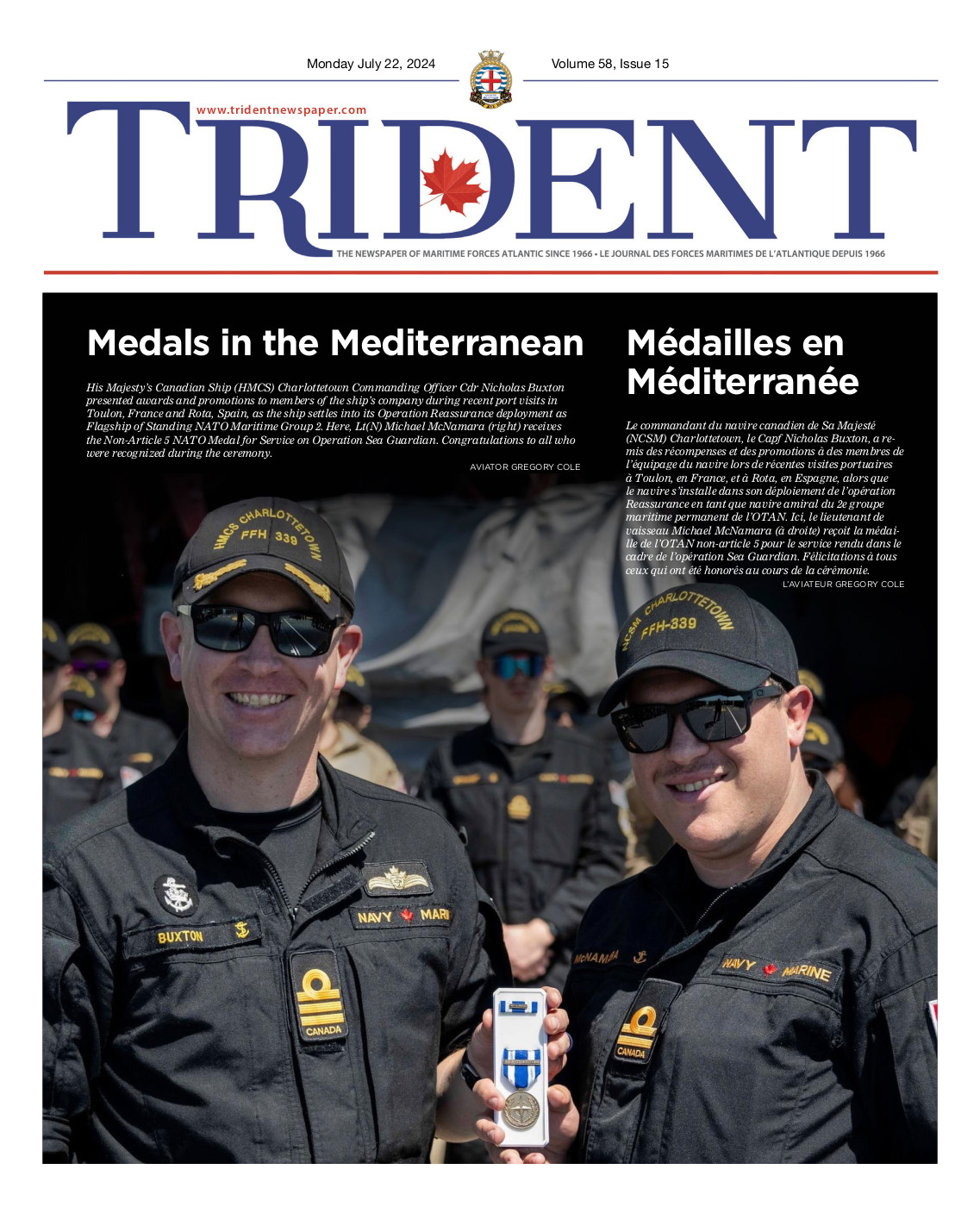
Canada leads the way in building better fitting respirators
By Peter Mallet,
The Lookout
A made-in-Canada invention is poised to make respirators used in Basic Military Qualification (BMQ) training more inclusive for all Canadian Armed Forces (CAF) members.
The final testing phase for the C5B respirator occurred at CFB Esquimalt’s Damage Control Training Facility Galiano in Colwood at the end of November. Those leading the phase have declared the C5B respirators a technological breakthrough.
Dr. Paul Bodurtha of Defence Research Development Canada (DRDC) confirmed his team’s goal of providing a more inclusive respirator mask for BMQs is nearing fruition.
“It’s a basic question of human rights and I am happy to say we are the first nation whose military is taking this onboard and looking at how to better accommodate all members,” he said.
The mask has been received well among trial participants. Corporal (Cpl) Ouiam Meftah, from the 35 Combat Engineer Regiment of Quebec, said she likes what she sees in the final respirator design.
“It is great to see this day and have equipment that fits everybody and that everyone can feel safe in and protected,” said Cpl Meftah. “In the past, I always dreaded going into the gas hut, but now the C5B protected me better than before.”
The combat engineer is Muslim and wears a hijab. She previously participated in three other trials.
Bodurtha says validating the C5B for operational uses by military members in combat situations will be part of phase two of the testing.
BMQ Confidence Booster
Inside the Gas Hut in Colwood, 26 military members put the new respirators through a complete testing battery. Along with the C5B, they also wore long rubber gloves and standard military Chemical, Biological, Radioactive and Nuclear (CBRN) coveralls to protect them from tear gas dispersed inside the hut.
The participants ensured the typical body movements and CBRN respirator drills conducted during a standard BMQ gas-hut test will not result in any tear gas penetrating the respirator or the C5B’s protective aerosol filtration membrane.
Major (Maj) Christian Doucet of the Canadian Army Directorate Joint CBRN Defence led military members through the trials. He says having confidence in personal protective equipment (PPE) is essential for the morale of all military members. He is happy to report it has been a success with all those involved in the final testing phase.
“Some people in our testing who have been CAF members for 30 years never had a properly fitting respirator, but now, for the first time, they smell nothing inside the gas hut,” said Maj Doucet.
A team of scientists led by Bodurtha measured and recorded whether the protection in the C5B was maintained throughout, ensuring no significant amount of tear gas had penetrated the masks.
Besides the hands-on tests, members participated in multiple tabletop discussions and reviews of the new product with the scientists. They were instructed to report any irritation, smells, or other signs the tear gas had bypassed their new PPE.

How It Works
The key design feature of the C5B respirator, says Bodurtha, is the hood that attaches to a standard C5 gas mask currently used in BMQs across the country. Closely resembling a beekeeper’s helmet, the hood provides an extra layer of protection to the traditional gas mask. The hood is sealed to the outside rubber seal of the gas mask and easily slides down over the top of the C5 for easy removal and storage in a carrier while not in use. The C5B also has a drawstring to tighten and seal around the head and neck to prevent gas seepage.
The hood’s protective aerosol filtration membrane works similarly to filtering facepiece respirators, such as N95s and medical face masks, removing particulates from the air. A CBRN protective hood consisting of a chemically absorbent, carbon-impregnated textile, is also worn over the C5B to further add an additional layer of protection and tightening of the C5B around the neck.
The C5B gas mask and its protective hood were specially designed for individuals with beards, religious headdresses including turbans, patkas or hijabs, long hair and abnormal facial features that do not fit within an in-service respirator.
Testing was conducted by a team of scientists from the Suffield Research Centre from Defence Research Development Canada (DRDC), the science and technology organization of the Department of National Defence, and from the CBRN Protection Group of the Royal Military College of Canada.
The C5B is the invention of the Canadian technology company AirBoss Defense Group. Mario Champigny, AirBoss Director, says he and a team of 15 have been working on developing the mask since August 2020.
“We are very encouraged by the testing we are seeing today because it confirms all our previous testing and the lessons that have come with them,” said Champigny. “Today is the first time all of our recruits could succeed through the entire exercise required by recruits without any serious issues.”
The trial has validated the C5B can be part of BMQs training, but it is still up to the Canadian Forces Leadership and Recruit School (CFLRS) to implement the mask in training, said a spokesperson for DRDC.
After clearing the final hurdles, the C5B could be available for BMQ recruits in the late fall of 2024. Bodurtha believes the C5B also has the potential to become a piece of equipment used in combat operations, but this will require further design improvements and testing in the coming months and years ahead.





